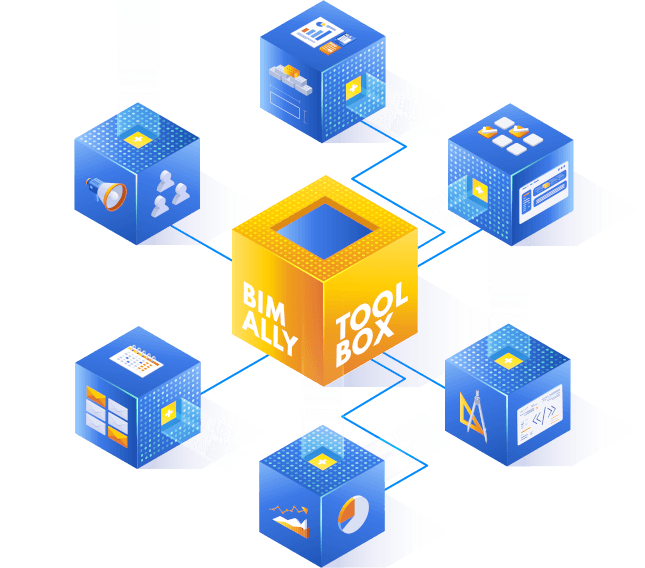Automation in architecture as an example of increasing design efficiency using ABK on the example of experience with Xella Polska

Xella Polska is one of the largest producers of building materials for erecting silicate walls and ABK concrete. They work nationwide, and as the Xella group they operate throughout Europe, with the headquarters based Germany. The company is distinguished by an innovative approach to materials and energy efficiency, as well as the support of building designers, through which they facilitate designing with the use of their products. They have been working on various solutions aimed at increasing the efficiency of design using ABK concrete for a very long time. They started introducing innovations in 2015.
The first step was to create a material library for Autodesk Revit. It was an innovative solution that allowed architects to load materials into the project using a plug-in. Bacause of this solution, architects were able to replace materials in wall systems. This solution was the first step, not yet perfect as it had some limitations. The plug-in was dedicated only to Autodesk Revit, and the product database was located directly in the plug-in. This meant that the products that were changed were not updated on a regular basis. However, that time “cloud” based solutions were not as popular as they are today. The plugin also did not offer feedback on products used the most by architects. However, the concept itself was very good.
The next step, implemented at the level of the entire Xella Group, was a large BIM object platform, covering a wide range of products and multiple vendors. Unfortunately, Xella products were one of many there. The main goal of this solution was to unify BIM libraries for all countries in the entire group. Additionally, an overlay was introduced, which allowed to divide the wall into individual blocks, directly in Revit. However, the effects turned out to be unsatisfactory. The solution prepared for everyone turned out not to be suitable for anyone. In addition, the overlay that divided the walls into blocks was very burdensome for the computer and the two straight divided walls made the object impossible to rotate freely.
On the other hand, the very idea of counting all blocks is correct, but the above process had to be optimized so as to obtain calculations, and at the same time not to overload the project with excessive details. This meant an increase in the level of information “Level of Information” (LOI) while lowering the geometric level of “Level of Development” (LOD). Based on the above experiences, Xella Polska already knew what was working and what needed improvements. Read more about LOI and LOD
In 2020, Xella Polska started cooperation with BIM ALLY as a BIM service provider, mainly due to their extensive experience. From the beginning of 2021, BIM ALLY provided Xella Polska with a tool package called BIM ALLY TOOLBOX. It is a set of complementary tools and services that allow us to easily solve the challenges posed by designers and the world of BIM technology. The functions built into the BIM ALLY TOOLBOX allow not only to equip designers with digital BIM models of products, but also enable them to easily use them at every stage of the design.
BIM ALLY has updated the entire material library, introduced changes over time and expanded it with the necessary thermal and physical information, thus enabling building simulation and cost analysis. The next step was to build one consistent data repository, available as a Web Application.
The BIM ALLY web application is a module integrated with the company’s website, thanks to which designers can easily browse and download BIM models of products. What’s more, thanks to the use of advanced and dedicated filtration, architects can easily find materials that match the requirements of a given project. This is a significant improvement to the library that was created in 2015 and was only available via a plug-in in Autodesk Revit.
Currently, the Web Application allows you to search and download the BIM library both via a plugin and a website (Autodesk Revit, ArchiCAD). In addition, the Web Application collects not only BIM libraries, but also specifications, technical documentation, certificates, etc., becoming one consistent data repository. In the future, we also see the possibility of PIM (Product Information Management) integration with BIM (Building Information Modeling) via a Web Application.
From the perspective of Xella Polska, it is also important to know which materials are most often used and placed in the models. This allows it to better adapt to market expectations. Moving the BIM library of products to web solutions allows for greater control over the updating of products, access to them becomes easier, and the products themselves are easier to find by architects.
Another automation aimed at improving the work of architects is the innovative BIM ALLY plugin,which allows you to download and use BIM models of products directly in the design software. Regardless of whether the building designer uses Autodesk REVIT for his work, ArchiCAD, the entire model library is available from the level of a specific project.
Here once again the experience was of great importance. This time, the BIM library and other resources are not installed on the architect’s computer, but are each time downloaded from the Web Application and loaded directly into the project. This solution guarantees the use of the most up-to-date information. Although the offer of products based on aerated concrete does not change frequently, it should be updated from time to time. A plugin that downloads the library from the cloud ensures its full compliance with the latest standards.
In addition to the download functionality, the plugin has a number of automation to improve communication on the Producer – Architect line, i.e .:
- Automatic generation of lists and the ability to send them to the manufacturer based on the design is crucial in the business context. Information on which products are most often chosen and used in projects by architects. Quantitative data on materials used in the projects, information on the generated material lists and the possibility of using automatically generated reports allow for a better understanding of the market and customer needs.
- Automatic download of catalog cards, certificates, etc. based on the products used in the project. An architect can download all available documents from the Web Application with one click.
- One of the most important functionalities of this cover facilitates the insertion of lintels based on the dependence of the wall type (thickness) and the size of the opening. This answers one of the most frequently asked questions that the technical department has received from architects. At the same time, it significantly saves the designer time. Lintels are inserted automatically based on the list approved by the architect.
The purpose of BIM ALLY Plug-In is primarily to facilitate the work of designers with the manufacturer’s products due to a special plug. As a result the designer or architect has the ability to download specific BIM models of the manufacturer directly in the design software environment such as Autodesk Revit, ArchiCad or SketchUp. Moreover, the BIM ALLY Plug-in analyzes the information of a specific project or structural element. Because of this, it will automatically suggest models that match specific product parameters, such as: size, load capacity, energy consumption, carbon footprint, or other relevant from the design point of view.other relevant from the design point of view.

BIM ALLY TOOLBOX will equip your company with tools and services, thanks to which you will be able to effectively manage cooperation with both current and newly acquired designers.